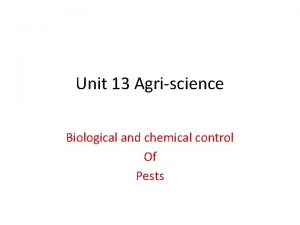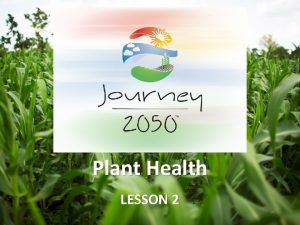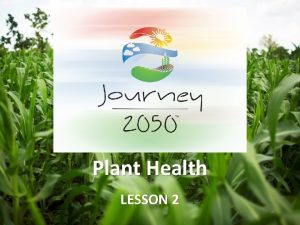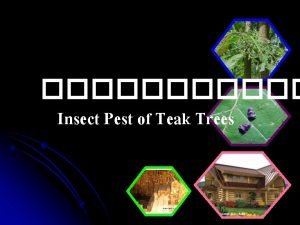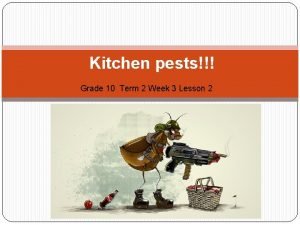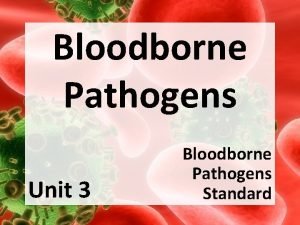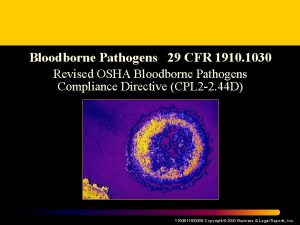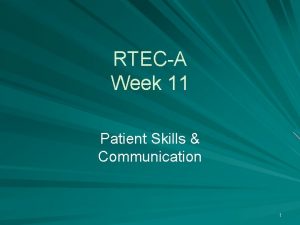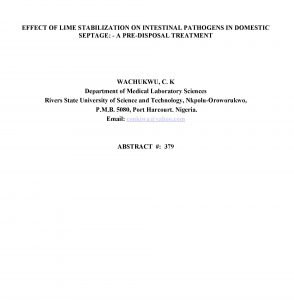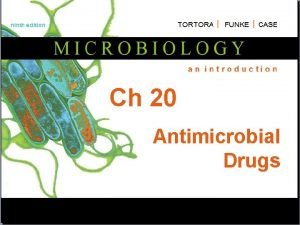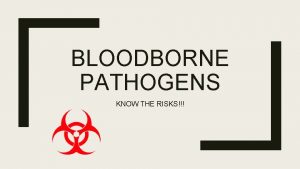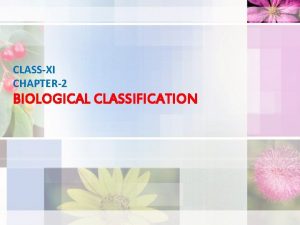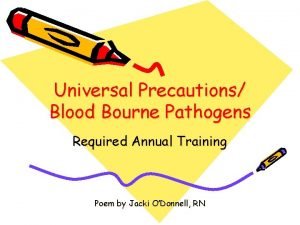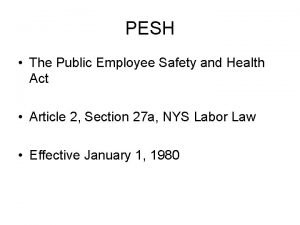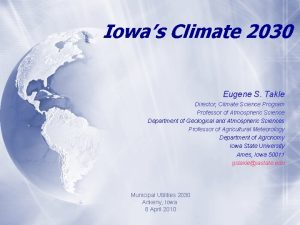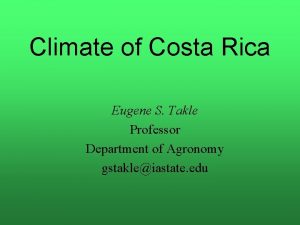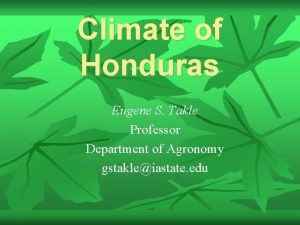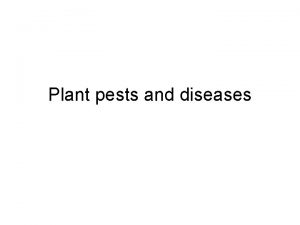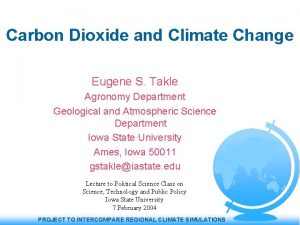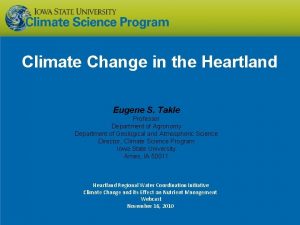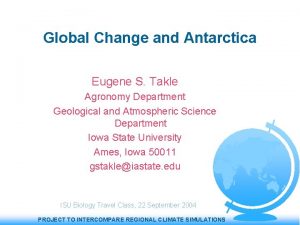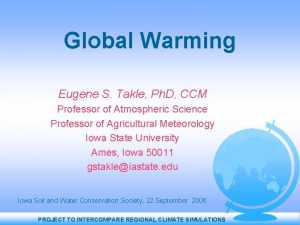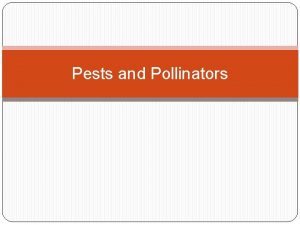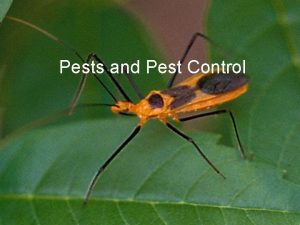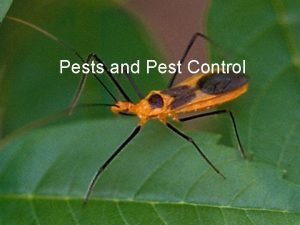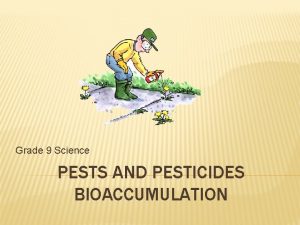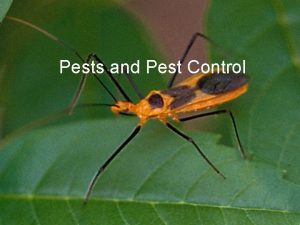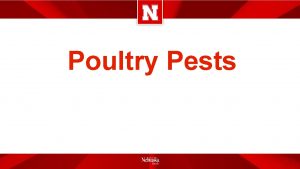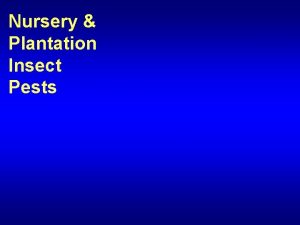Climate Pests and Pathogens Eugene S Takle Professor




















- Slides: 20

Climate, Pests and Pathogens Eugene S. Takle Professor of Agricultural Meteorology, Department of Agronomy Professor of Atmospheric Science, Department of Geological and Atmospheric Sciences Director, Climate Science Initiative Iowa State University gstakle@iastate. edu Midwest Weather Working Group, Minneapolis, MN, 25 July 2008

http: //www. ncdc. noaa. gov/img/climate/research/2007/ann/glob-jan-dec-error-bar-pg. gif

Natural and anthropogenic contributions to global temperature change (Meehl et al. , 2004). Observed values from Jones and Moberg 2001. Grey bands indicate 68% and 95% range derived from multiple simulations.

Natural and anthropogenic contributions to global temperature change (Meehl et al. , 2004). Observed values from Jones and Moberg 2001. Grey bands indicate 68% and 95% range derived from multiple simulations. Natural cycles

Natural and anthropogenic contributions to global temperature change (Meehl et al. , 2004). Observed values from Jones and Moberg 2001. Grey bands indicate 68% and 95% range derived from multiple simulations. Not Natural

Source: Jerry Meehl, National Center for Atmospheric Research

Energy intensive Reduced Consumption Energy conserving Mitigation Possible Adaptation Necessary IPCC Fourth Assessment Report Summary for Policy Makers


Suitability Index for Rainfed Agriculture IPCC 2007

Suitability Index for Rainfed Agriculture IPCC 2007

Projected changes in precipitation between 1980 -1999 and 20802099 for an energyconserving scenario of greenhouse gas emissions IPCC 2007

Projected Changes* for the Climate of the Midwest Temperature • • Longer frost-free period (high) Higher average winter temperatures (high) Fewer extreme cold temperatures in winter (high) Fewer extreme high temperatures in summer in short term but more in long term (medium) • Higher nighttime temperatures both summer and winter (high) • More freeze-thaw cycles (high) • Increased temperature variability (high) Follows trend of last 25 years and projected by models No current trend but model suggestion or current trend but models inconclusive *Estimated from IPCC reports

Projected Changes* for the Climate of the Midwest Precipitation • • More (~10%) precipitation annually (medium) Change in “seasonality”: Most of the increase will come in the first half of the year (wetter springs, drier summers) (high) More water-logging of soils (medium) More variability of summer precipitation (high) – More intense rain events and hence more runoff (high) – Higher episodic streamflow (medium) – Longer periods without rain (medium) Higher absolute humidity (high) Stronger storm systems (medium) Snowfall increases (late winter) in short term but decreases in long run (medium) More winter soil moisture recharge Follows trend of last 25 years and projected by models No current trend but model suggestion or current trend but models inconclusive *Estimated from IPCC reports

Projected Changes* for the Climate of the Midwest Other • • Reduced wind speeds (high) Reduced solar radiation (medium) Increased tropospheric ozone (high) Accelerated loss of soil carbon (high) Phenological states are shortened (high) Weeds grow more rapidly under elevated atmospheric CO 2 (high) Weeds migrate northward and are less sensitive to herbicides (high) Plants have increased water used efficiency (high) Follows trend of last 25 years and projected by models No current trend but model suggestion or current trend but models inconclusive *Estimated from IPCC and CCSP reports

D. Herzmann, Iowa Environmental Mesonet

D. Herzmann, Iowa Environmental Mesonet

Improving Seasonal Climate Forecasts • Seasonal climate forecasts (2 week – 9 month) show little if any skill • Ensembles of climate models representing a range of physical parameterizations and initializations consistently outperform single models • Soil moisture (SM) is the terrestrial equivalent of sea-surface temperature in providing “memory” to the climate system • Forthcoming satellite retrievals by ESA and NASA provide optimism for better characterization of SM • We at Iowa State are launching a partnership with NOAA and NASA to improve seasonal forecasts by use of improved initialization and ensemble forecasts • Goal of this research is to improve decision-making tools for use in agriculture, primarily in the Midwest

Multi-RCM Ensemble Downscaling of NCEP CFS Seasonal Forecasts (MRED) • Multi-institutional program funded by NOAA • Led by Ray Arritt of ISU • Uses NOAA and NASA global forecast models for initialization of eight regional climate models • Uses 15 different initialization points to produce about 120 seasonal forecasts • This is a retrospective study (1982 -2004) • Focus on winter period (Dec – Apr) • Not much help for growing seasons

Improving Agricultural Decisions And Predic. Tions (ADAPT) for the US Midwest by Use of Satellite Products and Regional Climate Models • Parallel project to MRED being proposed to NASA • Led by Gene Takle • Uses NASA global model and NASA Land Information System for initializing regional climate models • Will use the latest satellite-based observations of soil moisture to initialize and validate • Focus on growing season (Mar – Oct) • Ensemble of two regional climate models with multiple initialization states and many parameterizations

Forthcoming Collaborations Opportunities • We need examples of decision tools having strong dependence on daily weather conditions that would benefit from seasonal forecasts • Contact me (gstakle@iastate. edu) if you are interested in collaborating on this project
 Promotion from assistant to associate professor
Promotion from assistant to associate professor Agriscience unit 13 completion answers
Agriscience unit 13 completion answers Which nutrient practice was best journey 2050
Which nutrient practice was best journey 2050 Student handout 3 crossword puzzle journey 2050
Student handout 3 crossword puzzle journey 2050 Climate change 2014 mitigation of climate change
Climate change 2014 mitigation of climate change Cvs potting soil
Cvs potting soil Teak insect
Teak insect Pests can cause which two types of contamination?
Pests can cause which two types of contamination? Bugs in homes identify
Bugs in homes identify Human pathogens and toxins act
Human pathogens and toxins act Bloodborne pathogens quiz answers
Bloodborne pathogens quiz answers Unit 3 bloodborne pathogens standard
Unit 3 bloodborne pathogens standard Bloodborne pathogens quiz answers
Bloodborne pathogens quiz answers Blood borne pathogens
Blood borne pathogens Major human pathogens
Major human pathogens Penicilloic acid
Penicilloic acid Blood borne pathogens
Blood borne pathogens Bloodborne pathogens know the risk
Bloodborne pathogens know the risk Six kingdoms worksheet
Six kingdoms worksheet Bloodbourne pathogen training
Bloodbourne pathogen training Public employee safety and health
Public employee safety and health

